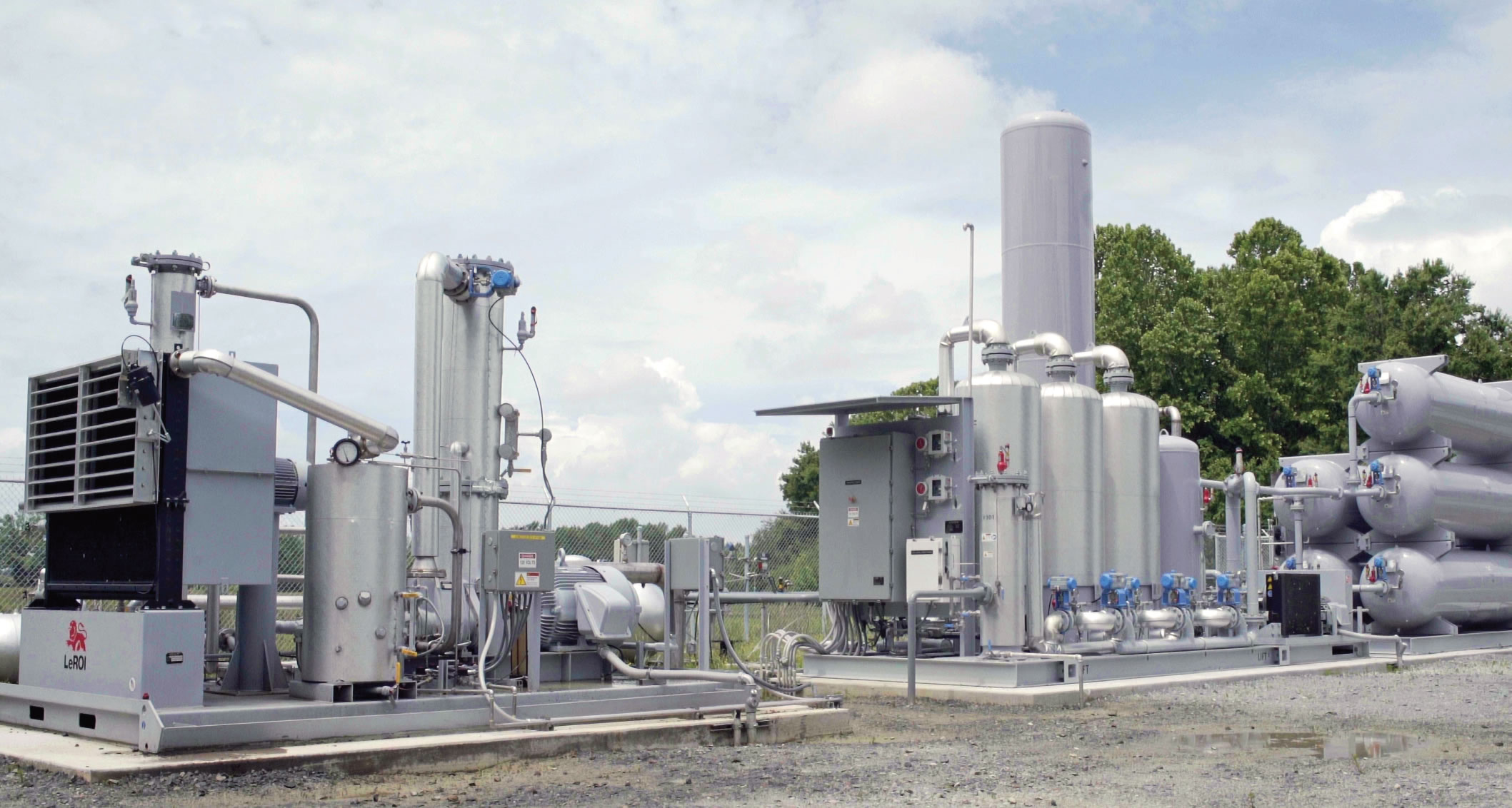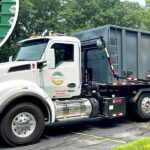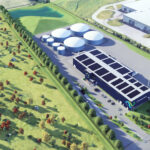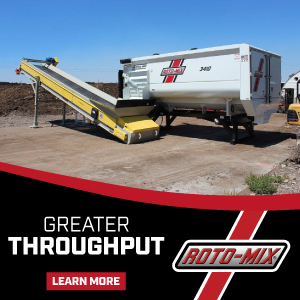Nora Goldstein
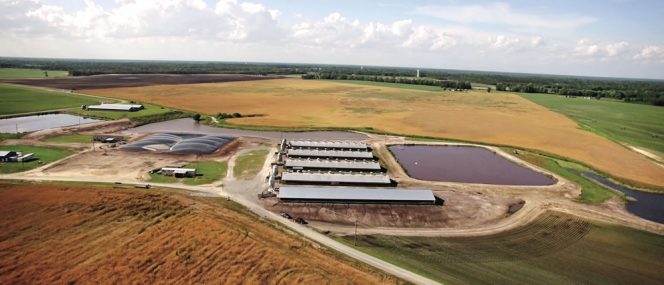
Circle K Farm, a contract hog grower for Smithfield Foods, is part of the Optima KV renewable natural gas pilot project in Kenansville, North Carolina. Photo courtesy of Smithfield Foods, Inc.
In December 2016, Smithfield Foods, Inc., the world’s largest pork processor and hog producer, announced a goal of reducing its greenhouse gas (GHG) emissions by 25 percent by 2025, equivalent to a reduction of more than 4 million metric tons of carbon. Included in the goal is incorporating renewable energy and reuse projects that utilize technology such as anaerobic digesters and lagoon covers.
The company launched Smithfield Renewables in 2017 to ensure it met its GHG reduction goal while also unifying, leading and accelerating its carbon reduction and renewable energy programs. One year later, Smithfield expanded this platform and announced new innovative initiatives including “manure-to-energy” projects across 90 percent of Smithfield’s hog finishing space in North Carolina and Utah, and nearly all of Smithfield’s hog finishing spaces in Missouri over the next 10 years. The plan includes converting existing open-air anaerobic treatment lagoons to covered digesters or constructing new covered digesters to capture biogas, which will be transported to central processing facilities to be converted into renewable natural gas (RNG).
Then came this announcement in late November: “Dominion Energy and Smithfield Foods, Inc. are joining forces in an historic initiative to transform the future of sustainable energy and agriculture, announcing their first projects in North Carolina, Virginia and Utah. The companies are forming a joint venture called Align Renewable Natural Gas (RNG)℠ that will capture methane emissions from hog farms and convert them into clean renewable energy for residential home heating and power for local businesses.”
“Smithfield Foods has been working on renewable energy for years,” notes Stewart Leeth, Smithfield’s Chief Sustainability Officer. “At the end of the 1990s, we started installing projects on individual farms. One included a very large project in the Utah desert that involved making a liquid fuel from manure. That one failed. We also covered lagoons, captured the gas and burned it in microturbines to send to the grid. These were one-off projects that never really worked and the financial returns were not very good. Now we have a model that is very workable and scalable.”
Adds Kraig Westerbeek, Senior Director of Smithfield Renewables: “The traditional approach is biogas to electricity on the grid, or on-farm use. There is an inherent inefficiency that has to be overcome at the farm level specific to this approach, including heat loss with the engines and microturbines. We ultimately evaluated production of clean natural gas, which is much more efficient as there is no loss of BTU value as the gas moves. In addition, renewable natural gas has a lot of different markets.”
Gary Courts, General Manager, Business Development of Dominion Energy’s midstream natural gas infrastructure business, explains that both companies recognize the urgent need to reduce greenhouse gas emissions. “Renewable natural gas (RNG) is an innovative and proven approach to reducing methane emissions from both the energy and agriculture industries, which is why we’re partnering with Smithfield on this historic initiative,” he says.
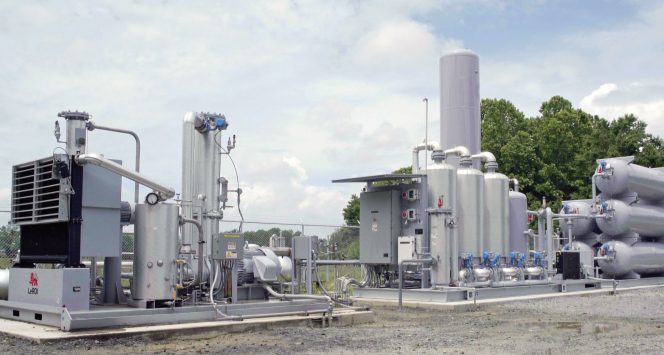
Preconditioned biogas from the farms is routed to Optima KV’s central gas clean-up facility (above) on Smithfield Foods’ property. The cleaned biomethane is pressurized to pipeline standards and sold to Duke Energy. Photo courtesy of Smithfield Foods, Inc.
Business Model
In Missouri, “manure-to-energy” projects are taking place on Smithfield-owned hog farms. In this state, hog manure management is in covered lagoons, so the company does not anticipate installing new anaerobic digesters. Operations in Missouri are not part of the Align RNG joint venture, as Smithfield has an existing partnership with Roeslein Alternative Energy.
In North Carolina, most of Smithfield Food’s hog finishing capacity is on smaller farms owned by contracted growers. (The Environmental Defense Fund notes that there are more than 2,000 hog farms in the state.) In Utah, Smithfield is building its own hog farm operations on land it owns. On all of these farms, gas will be collected, moved to a central point for conditioning and compression into RNG, and either directly injected into a pipeline or transported to a pipeline injection point.
“The growers will own the digester or covered lagoons,” explains Westerbeek. “Align RNG will contract for the raw biogas from the farmer, and provide the infrastructure to clean the gas to pipeline quality, The contracts, in turn, will help growers obtain financing from their lending institutions. Our role is to derisk the price of producing RNG to the farmer. Ultimately, however, it will be the growers’ decision to invest or not in digester infrastructure.”
In its business model, Align RNG assumes all the RNG market risks and owns the attributes, including revenues from sale of RNG credits (RINs under the federal Renewable Portfolio Standard, and credits under California’s Low Carbon Fuels Standard). It also will oversee pipeline injection approvals and interconnections. “We will work with utilities to get them comfortable with the idea that when clean, RNG made from biogas is very high quality gas,” he adds.
Dominion and Smithfield are jointly investing at least $250 million in this initiative over the next decade with initial application on 90 percent of Smithfield’s finishing spaces in North Carolina and Utah.
Projects will be implemented in Virginia and there is potential for wider-scale application across the country, according to a press release issued by the joint venture.
The joint venture plans to deploy the “farm cluster” model utilized in the Optima KV pilot project to make RNG in Kenansville, North Carolina (see “Swine Manure to Biomethane,” June 2018). Optima KV is a collaborative venture between Smithfield Foods, local family farmers who raise hogs under contracts with Smithfield, engineering firm Cavanaugh Associates, developer OptimaBio, and outside investors. Manure is pumped from the animal barns into an HDPE-lined and covered in-ground digester at each of the five contiguous farms housing 60,000 pigs. Each farm is outfitted with a low-power compressor that pulls the biogas from beneath the covers and filters it to remove particulates. The preconditioned biogas is routed to a central gas clean-up facility on Smithfield Foods’ property about 3 miles away. The cleaned biomethane is pressurized to pipeline requirements and sold to Duke Energy via a subsidiary, Piedmont Natural Gas, which operates the natural gas distribution network in eastern North Carolina.
Align RNG will expand this existing program to two larger farm clusters in Duplin and Sampson Counties, North Carolina, as well as develop one in Waverly, Virginia, and another in Milford, Utah. Construction of these facilities is expected to begin in late 2018 with the first RNG projects scheduled to be in service in late 2019.
These four projects will produce enough energy to reliably power 14,000 local homes and businesses, and will reduce GHG emissions equal to taking 120,000 cars off the road, according to Align RNG.
“Beyond its environmental benefits, RNG has another attribute that’s important for public utilities and all energy consumers — it’s reliable,” explains Courts. “Unlike other renewables like solar and wind, RNG provides energy 24/7, 365 days a year and can be used on-demand to meet the real-time needs of homes, businesses, utilities, and manufacturers. RNG combines the environmental benefits of renewables with the reliability of natural gas.”
Adds Gus Simmons with Cavanaugh & Associates, who conceived the Optima KV project: “This joint venture is a fabulous development for the biogas industry. I’m fairly certain that this is a first of its kind commitment between a food company and a utility. We can’t even fully comprehend yet what this will do for the biogas industry and its ability to reach out to smaller and smaller sources — and help vet and improve equipment and processes.”
Simmons is optimistic that hog growers in North Carolina will be able to obtain the financial support needed to install lagoon covers or digesters because sale of RNG is a revenue generating activity that builds the farm’s asset value. “Farmers will benefit by having more revenue streams, and better realize the economic benefit from resources they already have on the farm,” he adds. “These activities amplify profitability of their operations.”


